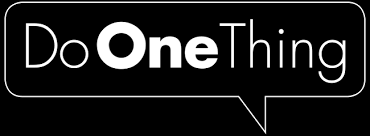Back when I was in college, a professor told our class, “If you read only one thing this semester, read this….”
He said it every week–about a different book!
Here's the one thing your nonprofit should do in 2021 to raise more money. Share on XIf You Do Only One Thing, Record Donations
I hope you had a great month of December, and the end-of-year donations poured in day after day. But…
Did you just deposit those checks in the bank and forget about them?
Did you just mark those online gifts in your bookkeeping system, so your accountant knows who gave what, but nobody else does?
Aha. Perhaps you made a list of donations, or even put them into a spreadsheet. Congratulations! Except–how easy will it be for you to find out:
- who gave money in 2019 and not in 2020?
- who gave more this year and who gave less?
- who gave once a year, once a quarter, once a month?
- who moved (or changed their email address) since the last time they made a donation?
Knowing these data will allow you to figure out which lapsed donors you need to try to win back, and which current donors might be candidates to give major gifts (or leave you money in their wills). It will keep you from sending out communications that never reach the people you want to feel appreciated and important.
Knowing these data will make more money for your nonprofit.
If you only do one thing in 2021, start recording your donor information in a donor database or CRM. Find one that works like you think, then use your new technology to make your relationship with your donors more personal. And by the way…
If You Do Only One Thing, Get to Know Your Donors
Good fundraising is relationship fundraising.
Yes, you might occasionally have a windfall. Your issue moves to the center of public attention and a bunch of people give money to you in the heat of the moment.
But for the long term, those people need to feel seen.
Donors don’t want to be the ATM on the wall you hit up when you’re short of cash. They don’t want to be one “dear friend” out of hundreds or thousands you address exactly the same way.
Donors want to know that you know them and value them. They are giving because they want to think of themselves as good people–and you can help them see themselves that way.
If you only do one thing in 2021, find out as much as you can about your donors. Don’t just send them a thank-you note–not even the ideal thank-you letter. That’s a one-way communication. Beyond the letter:
- Pick up the phone and call them. Ask them: what are they interested in? Why did they choose to give? What would they like to see happen as a result? (And record all that in your database!)
- Send them surveys, a couple of questions at a time, by email.
- Research your donors online. Find out what you can about their lives and interests outside of your organization.
- Take a look at your followers on social media. Which of them resemble your donors the most? (Those are your best prospects to become new donors!)
Getting to know your donors will let you segment your list into different audiences who care about different things. Recognizing your different audiences will let you send the right messages to the right people at the right time. And that means…
If You Do Only One Thing, Communicate!
Maybe you have a friend or a family member like this: you never see them. You never hear from them. Then one day, your phone rings, or your doorbell, and it’s them. You groan inside, because the only reason they ever show up is to ask for money.
You don’t want to be “that guy” to your donors. You need to show up for them between the times you ask.
If you have them in your database, you can be sure to send the mail or the email to the right address. And if you know which of your audiences they belong to, you can send them content that matters to them personally.
But even in a more broadcast format, like a newsletter or a social media platform, you can share stories, photos, facts, how-to’s, and other content that makes your donors (and prospective donors) glad to hear from you, every time.
If you only do one thing in 2021, communicate more often with your supporters. Aim for a newsletter every month, an email every week, a Facebook post every day, a tweet multiple times a day.
Does that sound like a lot of work? Yes, it is. But:
a) I can find out who your audiences are and what they want, by doing the research for you.
b) I can help you make the right decision about a database that will work for you and make your communications more powerful.
c) I can teach you to turn one story, photo, news article, or quotable quote into multiple ways to reach out and touch your donors.
d) I can show you ways to get the right kind of content delivered to your email inbox every day, so you can re-package it for your audiences.
If you do only one thing different in 2021, make that 'one thing' getting the help you deserve. Share on X

